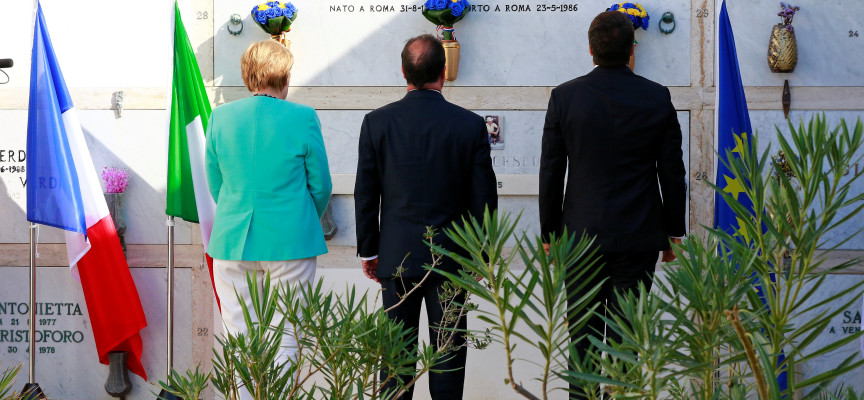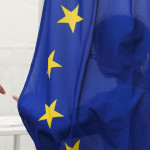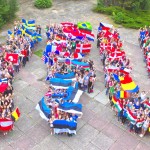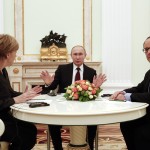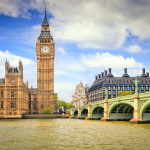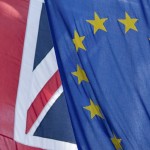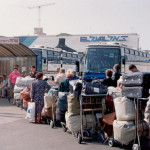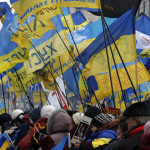The 99 cells of Santo Stefano prison on the island of Ventotene, where Altiero Spinelli was imprisoned for his aversion to the fascist regime, will become 99 rooms of a campus for European Union students.
It is a little sign of hope for this European historical passage. And it’s a sign of hope also the meeting of August 22nd between Angela Merkel, François Hollande and Matteo Renzi on the site where the “Manifesto” for a united Europe was thought and written.
In a complex season, in a Europe where distancing on sensitive issues such as migration, economic growth, peace prevail over sympathetic arrangements, the language of symbols is not enough and if it is not measured it can betray history, put it in a corner, relegate it on a remote island, and remove it from the growth of new generations.
The three Heads of Government of 2016 who, once left the island, spoke on the Garibaldi aircraft carrier, cannot easily be placed side by side, at least on the ideal plan, to the three exiles in Ventotene 1941-1944: Altiero Spinelli, Ernesto Rossi, Ursula Hirschmann and Eugenio Colorni.
But it would be equally unfair to assume that the distance between today’s and yesterday’s political thought is an empty time, a waste of time.
It has been a time with many shadows and too few lights after those lit by Robert Schuman, Alcide De Gasperi and Konrad Adenauer.
But we can get back on top again.
The analysis of the rough European pathway have been appropriate and abundant but now it is the time of treatment, of the cure for the growth, of the courage to look at Europe with realism, before it is too late.
It is true, the “road map” drawn on August 22nd in Ventotene has a scratch because of the Brexit affair but it tries to indicate some EU perspectives in five areas: the economic growth, youth, migrants, common defense, the fight against terrorism.
On the international stage, more and more in sad evolution, the European players are beginning to realize that national attention-seeking roles do not reward and that those who believe in the topicality of the European project and are convinced that the world needs more than ever a Europe united by a common commitment to human dignity cannot be left to themselves.
However, it is necessary to release the European consciousness from the cultural cage in which a presumptuous West bent to money, selfishness and indifference is imprisoned.
The image of the Santo Stefano prison turned into a place of hope comes back to mind.
The European Union, “the chained giant” of Martin Schulz, needs to be freed from its mediocrity and should take note of being on the threshold of the last opportunity to live.
But we cannot put all the responsibility just on the shoulders of young people, and a campus where once was a prison is not enough. A European cultural alliance between generations has to be ushered in and given substance. This seems to be the first message which came from Ventotene.
Le 99 celle del carcere Santo Stefano sull’isola di Ventotene, dove fu rinchiuso Altiero Spinelli per la sua avversione al regime fascista, diventeranno 99 stanze di un campus per studenti dell’Unione europea.
È un piccolo segno di speranza in questo travagliato passaggio storico europeo. Ciò vale anche per l’incontro del 22 agosto tra Angela Merkel, François Hollande e Matteo Renzi nel luogo dove venne pensato e scritto il “Manifesto” per l’Europa unita.
In una stagione complessa, in un territorio europeo dove le prese di distanza su temi sensibili come le migrazioni, la crescita economica, la pace, prevalgono su intese solidali, il linguaggio dei simboli non basta e, se non misurato, può tradire la storia, metterla in un angolo, relegarla su un’isola sperduta, toglierla dalla crescita delle nuove generazioni.
I tre capi di governo del 2016 che, lasciata l’isola, hanno preso la parola sulla portaerei Garibaldi non possono facilmente essere affiancati, almeno sul piano ideale, ai tre esiliati di Ventotene del 1941-1944: Altiero Spinelli, Ernesto Rossi, Ursula Hirschmann, ai quali si affiancò Eugenio Colorni.
Ma sarebbe altrettanto ingiusto ritenere che la distanza tra il pensiero politico di oggi e quello di ieri sia un tempo vuoto, un tempo perso.
È stato un tempo con tante ombre e troppe poche luci dopo quelle accese da Robert Schuman, Alcide De Gasperi e Konrad Adenauer.
Si può risalire la china.
Le analisi dell’accidentato percorso europeo sono state opportune e abbondanti ma ora, prima che sia troppo tardi, è il tempo delle terapie, della cura per la crescita, del coraggio di guardare all’Europa con realismo.
È vero, la “road map” disegnata il 22 agosto a Ventotene presenta un graffio per la vicenda Brexit, ma cerca d’indicare alcune prospettive comunitarie in cinque ambiti: crescita economica, giovani, migranti, difesa comune, lotta al terrorismo.
Sul palcoscenico internazionale, sempre più in triste evoluzione, gli attori europei incominciano a rendersi conto che non premia il protagonismo nazionale e non si possono abbandonare a se stessi quanti credono nell’attualità del progetto europeo e sono convinti che il mondo abbia bisogno più che mai di un’Europa unita da un comune impegno per la dignità dell’uomo.
Occorre però far uscire la coscienza europea dalla gabbia culturale in cui è imprigionato un Occidente presuntuoso e piegato al denaro, all’egoismo, all’indifferenza.
Torna l’immagine del carcere di Santo Stefano trasformato in un luogo di speranza.
L’Unione europea, “il gigante incatenato” di Martin Schulz, ha bisogno di essere liberata dalla sua mediocrità e deve prendere atto di essere alle soglie dell’ultima opportunità per vivere.
Non si può però mettere solo sulle spalle dei giovani tutta la responsabilità, non basta un campus lì dove era un carcere. Occorre inaugurare e dare sostanza a un’alleanza culturale europea tra generazioni. Sembra essere questo il primo messaggio venuto da Ventotene.
Paolo Bustaffa
Latest posts by Paolo Bustaffa (see all)
- Europe in Aldo Moro’s project - 31 dicembre 2016
- Ventotene: a cultural alliance between generations is urgent for the EU - 3 settembre 2016
- That flag in the Wyd - 7 agosto 2016

